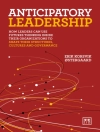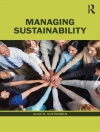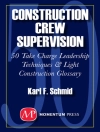An unparalleled guide to the theory and practice of public relations
Reflecting advances in theory, research, and application in the discipline since the publication of the Handbook of Public Relations in 2001, this new volume is global in scope and unmatched in its coverage of both academic research and professional best practice.
Key Features
- Presents major theories in the words of the leading advocates for each theory
- Covers the full range of theory, research, and practice in the discipline
- Positions public relations as a positive force to help make society more fully functional
- Challenges academics and practitioners to identify best practices that can inform the work of those in the profession
Mục lục
Preface – Robert L. Heath
Section One Introduction: Mind, Self, and Society – Robert L. Heath
1: Public Relations in the Enactment of Civil Society – Maureen Taylor
2: Strategic Management of Communication: Insights from the Contingency Theory of Strategic Conflict Management – Augustine Pang, Yan Jin, Glen T. Cameron
3: Seeing the Forest through the Trees: The Behavioral, Strategic Management Paradigm in Public Relations and Its Future – Jeong-Nam Kim and Lan Ni
4: The Cursed Sisters: Public Relations and Rhetoric – ∅yvind Ihlen
5: Implications of Complexity Theory for Public Relations: Beyond Crisis – Dawn R. Gilpin and Priscilla Murphy
6: Signs of the Times: Economic Sciences, Futures, and Public Relations – David Mc Kie
7: Publics and Public Relations: Effective Change – Shirley Leitch and Judy Motion
8: Correspondence(s) to Reality: A Reconstructive Approach to Public Relations – Günter Bentele
9: Dialogue as a Basis for Stakeholder Engagement: Defining and Measuring the Core Competencies – Nigel de Bussey
10: “Keeping it Real”—Anthropological Reflections on Public Relations, Diplomacy, and Rhetoric – Jacquie L’Etang
11: Social Construction and Public Relations – Katerina Tsetsura
12: Public Relations and Power – Peter Smudde and Jeffrey Courtright
13: Power and Public Relations: Paradoxes and Programmatic Thoughts – Robert L. Heath, Judy Motion, and Shirley Leitch
14: “Race” in Public Relations – Lee Edwards
15: Toward an Intersectionality Theory of Public Relations – Jennifer Vardeman-Winter and Natalie T. J. Tindall
16: Does Public Relations Scholarship Have a Place in Race? – Damion Waymer
17: Feminist Scholarship and its Contributions to Public Relations – Brenda J. Wrigley
18: Reflective Management: Seeing the Organization as if from Outside – Susanne Holmström
19: Symmetry and Its Critics: Antecedents, Prospects and Implications for Symmetry in a Post-Symmetry Era – Robert E. Brown
20: Strategy, Management, Leadership, and Public Relations – Finn Frandsen and Winni Johanesen
21: Reputation, Communication, and the Corporate Brand – Peggy Simcic Brønn
Section Two Introduction: The Practice of Public Relations as Change Management – Robert L. Heath
22: The Use of Research in Public Relations – Marcia W. Di Staso and Don W. Stacks
23: Reputation Models, Drivers and Measurement – Tom Watson
24: Come Together: Rise and Fall of Public Relations Organizations in the Twentieth Century – Julie K. Henderson
25: Public Relations Identity: Evolving from Academic and Practitioner Partnerships – Bonnie Neff
26: Relationship Management Projects Public Relations Image: Analysis of Living History and Dreams from My Father – Gayle M. Pohl
27: Activism 2.0 – Michael Smith and Denise Ferguson
28: Activism in the 20th and 21st Centuries – Pamela G. Bourland-Davis, William Thompson, and F. Eric Brooks
29: Public Relations Practitioners and the Leadership Challenge – Bruce K. Berger and Juan Meng
30: Embedding Issue Management: From Process to Policy – Tony Jaques
31: Risk Communication – Michael J. Palenchar
32: Community Engagement and Risk Management – Katherine Mc Comas
33: Crisis Communication: A Developing Field – W. Timothy Coombs
34: Expanding the Parameters of Crisis Communication: From Chaos to Renewal – Matthew W. Seeger, Timothy L. Sellnow, and Robert R. Ulmer
35: Red Cross Crisis Communication in the Wake of September 11, 2001 – Kimberly A. Schwartz
36: Defining the Relationship Between Public Relations and Marketing: Public Relations′ Most Important Challenge – James G. Hutton
37: Being Public: Publicity as Public Relations – Kirk Hallahan
38: The Role of Public Relations in Promoting Healthy Communities – Jeffrey K Springston and Ruthann Weaver Lariscy
39: Community Relations and Corporate Social Responsibility – Robert L. Heath and Lan Ni
40: The Nature of Good in Public Relations: what Should Be Its Normative Ethic? – Shannon A. Bowen
41: Military Spokespeople and Democracy: Perspectives from Two Israeli Wars – Margalit Toledano
42: Sports Public Relations – Tom Isaacson
43: Investor Relations – Alexander V. Laskin
44: Public Relations Media – Kirk Hallahan
45: Directions in Social Media for Professionals and Scholars – Michael L. Kent
Section Three Introduction – Robert L. Heath
46: Why Culture is Still Essential in Discussions about Global Public Relations – Robert Wakefield
47: The Local, National, and Global Challenges of Public Relations: A Call for an Anthropological Approach to Practicing Public Relations – Marina Vujnovic and Dean Kruckeberg
48: Cross-National Conflict Shifting: A Transnational Crisis Perspective in Global Public Relations – Juan-Carlos Molleda
49: Globalization and Public Relations: Opportunities for Growth and Reformation – Krishnamurthy Sriramesh
Conclusion and Reflection – Robert L. Heath
Reflections on the Field – Elizabeth L. Toth
Giới thiệu về tác giả
Robert L. Heath, professor emeritus of communication at the University of Houston, is an internationally recognized authority on public relations, crisis communication, issues management, risk communication, and business-to-business communication. He has published many award-winning books, including The SAGE Handbook of Public Relations (2010), Handbook of Risk and Crisis Communication (2009), Strategic Issues Management (2nd ed., 2009), Rhetorical and Critical Approaches to Public Relations II (2009), and Terrorism: Communication and Rhetorical Perspectives (2008). Heath has 3 decades′ experience in corporate communication and positioning research. He has conducted research on risks related to various hazards, including those associated with chemical manufacturing and community right-to-know—key themes in community relations. In addition, he has published more than 100 chapters and articles and serves on the editorial and reviewer panels of several premier academic journals. He has received many honors from public relations professionals and academic associations and has lectured nationally and internationally on a wide array of topics.












